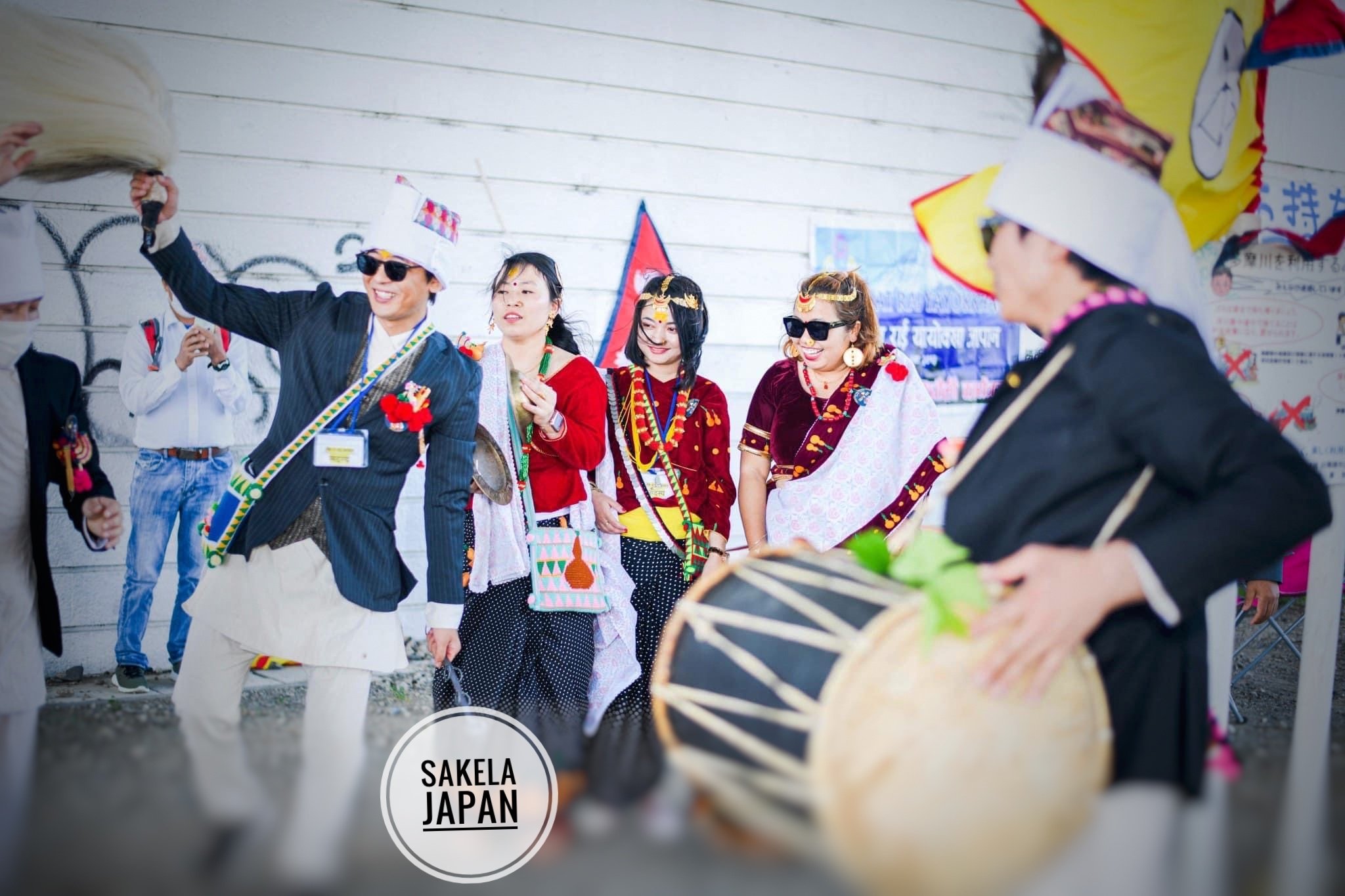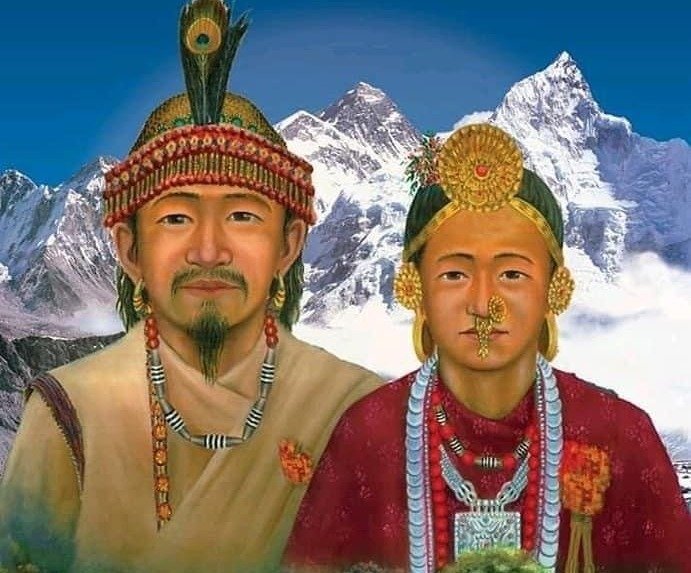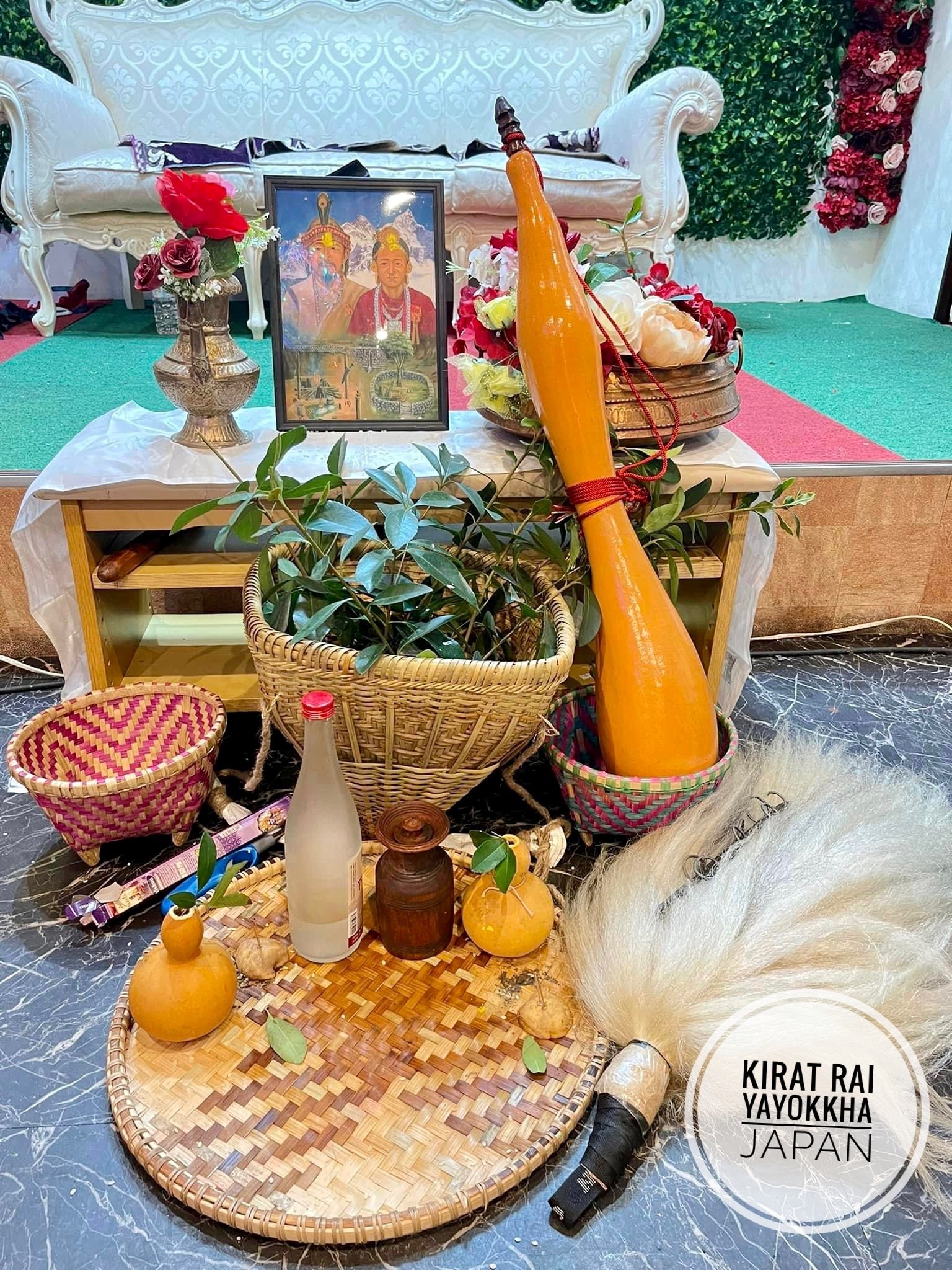SAKELA:A FESTIVAL OF NATURE & ECOLOGY
There are different festivals in Kirat religion. They are namely chawamang, mangpuja, chhonglak, maghe sakranti (New Year), udhauli puja (sakela), ubhauli puja (sakela) and sime bhume puja. Sakela is the major festivals among them. Each festival is described in The Mundhum and in each festival, The Mundhum is enchanted. The Mundhum plays significant role in Kirati cultural. According to The Mundhum, the first beings Sumnima and Paruhang are central attraction in Sakela. The nakshong enchants The Mundhum at the beginning of the dance.
Each Rai have different languages to communicate. And, each Rai performs Sakela with slight modification in dancing techniques and steps. For instance, Bantawa from Bhojpur dance Sakela in comparatively slow steps than Chamling of Khotang. Chamling of Khotang may or may not sing songs while dancing. But, for Bantawa of Bhojpur, song is a vital part of dance.
The Sakela is named according to different languages. Among the thirty six Rai languages believed to be existed in the past, twenty six languages are recorded and ten are believe extinct. According to the different clans in Rai community, the Sakela called as sakenwa, sakhewa, segro sili, bhume sili lak. All the different forms of Sakela share the same meaning. All the names signify the stone. In other words Sakela, Sakenwa, Sakhewa,segro sili, bhume sili lak mean the sila or stone.

Origin of Sakela:
Sakela means sila or stone. Stone is a natural thing. According to The Mundhum, the stone, or can say nature, symbolizes god or the creator. And the stone is supposed to be the forefathers of the Kirati. The Mundhum describes the mythological background and origin of Sakela .According to The Mundhum, all hitherto existing hearsays of the forefathers and the old person in the society tell us the story about the Sakela. There are different thoughts about the origin of Sakela in the Rai community. But the date of the origin of Sakela is still unknown. People have different views about the origin of Sakela.
Chandra Kumar Hatuwali, about the origin of Sakela in his book Sakenwa, opines, “It (Sakela) was supposed to begin about one thousand three hundred and forty nine years ago or in 606 B.S” ( 5). According to Hatuwali in his book Sakenwa, Sakela begins with the word ‘chhongkha’. Chhonkha is the word taken from the language of Bantawa. The word ‘chhong’ means simal (a type of tree). And ‘kha’ means ghari (bush).
Chhonkha is also the name of a village of Bhojpur district. According to the writer, this village is the historical place of Kirat Rai, where Sakela is supposed to be originated. Hatwali doesn't further elaborate about the orgin of Sakela. But, he clearly mentions that it is originated Chonkha or in Simal Ghari.
According to Hatuwali, Sumnima (Naahimaa) and Paruhang, were Suntums (the creator in Rai language). They had three sons. The first son was Chikiwa (the tiger) or Chapcha in Chamling, the second was Narawa (the bear) or Berpa in Chamling and the third one was the human being, Hengkubung (Minihochha in Chamling). The three sons had different attitudes. By nature, the tiger and the bear were wild. This elaboration about the human origin suggests that even the animals like tiger and bear are the sons of same forefathers as human beings do and they have equal right and space in this very earth. From Hatwali's elaboration, we can conclude every species in this earth should have equal space, which is the core concern of environmentalists, animal right activists, nature writers and eco critics.

Fig: Sumnima (Mother god )&Paruhang (Father God)
Hatwali elaborates that all the sons of Paruhang and Sumnima grew up under their care. But, as Henkubung was only human being, he was not wild in nature like his other brothers. He had got human intuition and intelligence. So, he learned many things like skill of hunting and the knowledge of archery.
Among the three sons, both animals were proud and stupid. But Hengkubung was intelligent, and had knowledge of everything. He was very clever. Sometimes, the tiger and the bear would attack him. But, he could easily escape and handle the situation. As the time passed their enmity grew up and they could not live together.
Because of the enmity, once, Henkubung killed his brother, tiger.But, Sumnima by chanting the The Mundhum and with the help of sila (stone), bechhup (ginger), rice, bottle gourd with the yeast, Seula (bunch of leaves), Khurma (knife) revived him. Then she gave Chikiwa and Narawa the forest to live in and Henkubung, the home. This narration suggests that from the very beginning of the existence of life, Gods or the forefathers had given all the species an adequate and equal place to live in. Eco criticism judges the state of natural interdependencies among the species which we find in primitive Kirat culture narrated especially Hatwali and others.
As Henkubung was blessed with clever mind and intelligence, he had to follow the Rit (traditional culture) established by forefathers. Summina passed the responsibilities of performing the Rit to her son Henkubung. She advised him to make happy the soul of the parents worshipping Sakela (Sila) in every six months; in Baisake Purnima and in Mangsire Purnima. From that day, the stone, which itself is the symbol of nature is worshipped as the Suptums (creator) and the dead souls of forefathers. During the Puja, everyone is blessed for good health, peace and fulfillment of the wish. In Sakela dance and the Puja, musical instruments, Dhol and Jhyamta, sword, knife and yak’s tail, are used as a vital part.

Fig: kirati Ritual stuff
Bhakta Kumar Rai in his book, Sakhewa Kina tells something different about the origin of Sakela. According to him, a clever Kirati was carrying a heavy stone from the grave of a Kirati king at Kathmandu to Bhojpur. He got heavily tired when he reached Dolakha and took rest there. All of a sudden, he fell asleep at the place dreamed Nakshong askinging him to worship the stone (Sakela). He got up from the dream and worshipped the stone making a Than and dancing Sakela there. From that day, it is believed Saleka begun and Kirati people started worshipping stone as the God.
Bam Bahadur Rai has another story about the origin of Sakela which is one of the most popular and entertained in Kirat Rai community. In his book, Pauranik Kirat Itihas, he has written that Sumnima, the first human being, bore four sons. Among them only the youngest one was human being and others were animals. They slowly and gradually grew up. The first, the second and the third sons started to live in the forest. The youngest son only was with her. Sumnima started feeling lonely and she decided that her youngest son should get married. She than asked the hand of the daughter of Nakima (Rainbow) to her son. Nakima happily accepted the proposal and a splendid marriage ceremony was done.
In the farewell of the wedding ceremony, Nakima put a stone and worshipped it by sprinkling jand (liquor made from fermented rice made by using millet as chemical) from chindo (pot of gourd). She sprinkled the jand from chindo around and on the stone. According to The Mundhum, the Sakela originated from that day. Nakima than gifted the chindo, stone and a fist of millet to the new couple. And, it is still believed that the gifted stone is still inside the earth. Here, the gifted stone symbolizes Sakela. The words Sakela and sila are interconnected with each other. Both signify the stone. For this reason the stone is very significant in Sakela dance. In other words, Sakela is celebrated to glorify the wedding ceremony of the son of Sumnima and the daughter of Nakima.
Though we find different thoughts and stories about the origin of Sakela, they all focus on the same thing; worshipping nature in the form of stone and equal space and opportunity to every species on this earth. In Hatwali's story Chapcha, the tiger is revived though it was killed by Henkabung, the human. This story symbolizes the right of life to every species on this planet as they are the children of God. Bam Bahadur Rai and Hatwali narrates that animals were given forest to live in and human, home. This suggests that God has given adequate space to all in the earth. And, all three stories have one of a single similarity of worshipping stone. The stone symbolizes nature which is very significant to prove the claim of Kirat Rai community as 'Nature Worshipper'.
Basically, frustrated from the Western industrialization and its severe negative impact on the earth, the critics lately flourished Eco writing and Eco criticism. Such writers and critics want to save the planet for tomorrow's generation by saving nature. Their main quest in this regard is how the planet's life can be extended. In order to achieve the goal, they have developed a common kind of understanding, i.e. develop eco friendly industries, cut carbon emission, use alternative energy, minimize the use of pesticides etc. In other words, they seem agreed in ecological justice and sustainable use of nature, which we already do have in Kirat culture.
From the day of the marriage of the son of Sumnima and the daughter of Nakima, Sakela continued and today it is celebrated as the greatest festival of Rai community. Government offers public holiday in Skaela. In Sakela, there is no need of invitation to anybody. In that day people starts to play Dhol and Jhyamta. By hearing the musical sound of Dhol and Jhyamta, people gathers and dance. They dance in disciplined manner, i.e., following the norms, rules and steps of the Sakela. They follow and change the steps according to the sound of Dhol and Jhyampta. Sakela is danced in circle and everyone can take part in it. There is no restriction to anybody to dance Sakela. The mother Sumnima and the Father Paruhang are central attraction of Sakela. And, everyone is believed to have the right to remember, pray and glorify the mother Sumnima and the Father.
The Kirati people believe that Sakela became possible due to suptums. It all happened because of good influenced spirits. And, Suptums are the creator of the Kirati people who have good spirits. Sakela is celebrated in their memory.